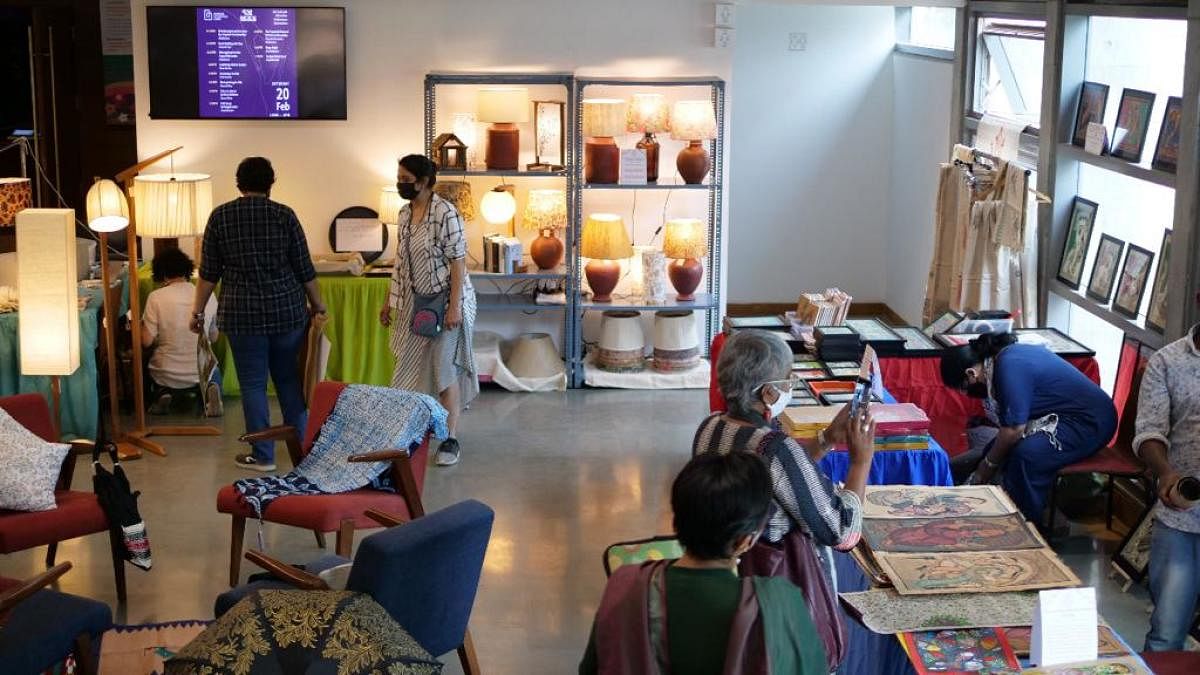
Handloom is the second-largest employment provider in the country but it’s also the worst-hit right now. The pandemic has impacted the industry severely.
Metrolife spoke to some organisations that are supporting the artisan community during these tough times.
Bangalore
International Centre
The non-profit organisation has been lending a helping hand to various artisans who are hit by the pandemic-affected handloom economy.
Initiated to ‘enhance, dialogue and foster ideas across culture and economy’, the organisation provided free space, earlier this year, for weavers and artisans from across the country to market their products in Bengaluru at the ‘BIC Habba’.
The centre allowed nearly 65 craftspeople to showcase and sell their products in its building for two days. A part of the exhibition was dedicated to the antique art by the Lambani community. This was done to provide visibility to their art form, which is on the decline.
V Ravichandar, director of BIC, as the organisation is called for short, told us the events and exhibitions they have oragnised to help the handloom sector.
“We partnered with the 100hands NGO, who helped us handle the whole exhibition. We managed to raise Rs 3.5lakh to cover the cost of travel and stay of the artisans participating in the exhibition,” Ravichandar talks about what has been the most successful exhibition at BIC. The event excluded all charges or rentals on the part of the artisans, who were a mix of experts in handloom, glasswork and other forms. The organisation plans to host similar events through the year to help artists and artisans.
Apart from these exhibitions, BIC also conducted online sessions and seminars to shine light on the challenges faced by the artisan community.
GoCoop
Nearly a decade old, GoCoop is India’s first online marketplace for weavers and artisans. Its main objective is to digitally enable and promote weavers, by connecting them with both consumers and buyers. It provides a platform to various artisan clusters from different districts of Karnataka, who are recognied by the Indian government.
After a complete breakdown of the value chain in the handloom industry and the closure of offline channels of supply, the organisation had to double its efforts to revive the sector, which included training the artisans remotely and bringing them online.
Siva Devireddy, founder of GoCoop, feels that their efforts have paid off.
“Artisans were looking for some hope and opportunity to survive because there were no sales of products happened anywhere else. This effort worked out well because we saw tremendous growth in (online) sales and there was a lot of solidarity from customers to support the artisans last year. We saw very good sales from June to October,” says Devireddy. The organisation has recently launched a special campaign for the handloom sector . Called ‘Go Swadesi’, its focus is celebrate the Indian handlooms and promote them abroad as well.
He believes that it is important to take pride in our handloom and handicraft, and to stand in solidarity with the artisan community.
Whebyabira
Started in 2020, WHE (Women, Handloom and Eco-friendly) by Abira, founded by Priyanka Khandelwal, is a jewellery and lifestyle brand. It has also forayed into categories like home accessories, dupattas, masks and even rakhis.
All the products are crafted by women from the marginalised backgrounds. These are mostly domestic workers who had lost their job during the pandemic. They were trained in various craftwork before they were hired by the company.
Sumedha, head of the company, says, “Many families lost their source of livelihood because of the pandemic and members from the marginalised community were the most affected. So we are supporting women who lost their job as a domestic workers, women who were seeking employment, and women who needed support and financial independence.”
The brand also worked with the ‘Porgai’ tribal artisans of Tamil Nadu to make them ‘market-ready’.
“Some artisans don’t necessarily make products for the market, so we work with them to contemporise their traditional art form and make it attractive for the market,” says the alumni of the National Institute of Fashion Technology.